A few weeks after I left Bangkok, it was reported that temperatures there “hit 42c … and the heat index - meaning what the temperature feels like combined with humidity - reached 54C.” (The Guardian 27th April 2023). At times I really struggled with the heat in South East Asia and that was when it was only around 32c in Bangkok. In my first few days I staggered around, zombie-like through lack of sleep, perpetually drinking bottles of water, and unfortunately binning countless plastic bottles. Whenever I could I would collapse into any shady spot I could find. I am a total wimp when it comes to heat; I don’t cope very well and my energy levels go right down. Since then Vietnam and Laos have also recorded their highest ever temperatures; 44.1C in Vietnam and 43.5 in Luang Prabang in Laos. For the residents of these cities, this heat is becoming really problematic, in terms of ability to work, get to school, or even being able to go outside, and this, combined with pollution issues, has a massive detrimental impact on physical and mental health.
However, I was pleased to learn that efforts are being made to combat some of these enormous problems, one of which is by attempting to ‘green-up’ the cities. The Green Bangkok 2030 Project was launched in 2020 with the aim of “increasing sustainable, urban, quality green spaces which are readily available to everyone.” (Green Bangkok 2030 Project, The Environment Department of the Bangkok Metropolitan Administration). “Readily available” means that people can access a green space within 400 meters or within 5 minutes walk of where they live. At present the average distance for residents of Bangkok from a park is 5km or a 45 minute walk. The Green Bangkok 2030 Project has set three ambitious targets: to increase the ratio of green spaces to 10 square meters per person; to increase public green spaces to no less than 50% of Bangkok’s total area; and to expand urban tree canopy to 30% of Bangkok’s total area.
One of the parks in Bangkok which is a great example of the Green Bangkok 2030 Project is the 178 acre Benjakitti Forest Park in the Khlong Toei area near the buzzing and madly congested Sukhumvit Road. The addition to the original park here is a 101 acre semi-wild area of wetlands and marshes. You can meander your way round it on elevated wooden walkways from where you view the watery landscape punctuated with lots of protuberant islands. There is also a rare plant area of native Vietnamese species, along with hundreds of trees, all against a backdrop of the city’s glass towers; it’s all a bit wonderfully and fantastically sci fi.
Benjakitti Forest Park, Bangkok
Not far from Benjakitti Forest park is the 142 acre Lumpini Park in central Bangkok which is far more traditional with a manmade boating lake, gardens and sports facilities. Every city needs both of these types of green spaces, and lots of them. There are plans to build 11 new parks in Bangkok and to upgrade the thousands of smaller green spaces into pocket parks to help meet the Green Bangkok 2030 targets. The idea is also to create a green walkway through the city.
It is almost bizarre how you can experience an instant drop in temperature when you walk into a tree-filled park in a hot city. The beautiful Saranrom Park was enroute to my hostel in Bangkok and provided a sublime break from the chaos of this cacophonous city. Whilst a long way away in terms of ecology from the wonderful Benjakitti Forest Park, it nevertheless had a significant cooling effect; a collection of mature trees, by the process of evapotranspiration, can reduce temperatures by up to 5C.
Saranrom Park, Bangkok
Creating parks and planting trees in a city is of course essential, but on a far smaller scale, it seems many people here are also doing their best, with generally few resources and little space, to green up where they can. The accumulation of plants and small fruit trees in pots adorning balconies, yards and steps, and epiphytes and climbers on fences and posts, has an instant transformative effect. It was lovely to stroll around the towns and cities seeing all the efforts made to beautify them with greenery, fruit and flowers.
Shop front, Bangkok with Asplenium nidus (Bird’s Nest Fern)
Cafe, Ko Lanta Old Town, Thailand with Tillandsia sp. (Air plants)
Chiang Mai yard with Tillandsia, Ferns, Asparagus setaceus (Asparagus ferns), and Philodendrons
Shop fronts, Chiang Mai, Thailand
Chiang Rai apartments, with Tillandsias and Platyceriums (Staghorn Ferns), and the purple and white flowers of Petrea volubilis, (Queen’s wreath)
Monstera sp. (Cheese plant) in Thai Garden
Lizard on Mango, Bangkok
Carica papaya (Papaya fruit) in Thai garden
Tourist information centre, Ko Lanta Old Town, Thailand
Bromeliads, front yards, Ko Tao, Thailand
Cacti and fern front yard, Rayong, Thailand
Pyrostegia venusta (Flamevine), Garden fence, Chiang Mai, Thailand
Of course one of the main problems of climate change in South East Asia is the risk of floods. Cambodia is in one of the most severe flood-vulnerable zones in the region and in some areas, Kampong Kleang for one, people have adapted by building houses on high stilts for when the water levels rise. When I was there the river was low so the houses seemed enormously tall, but next month they are likely to be nearly at eye level.
Pot plants on tall houses, Kampong Kleang, Cambodia
On Tonle Sap Lake people live in floating houses, but this sort of adaptation is not going to be possible in Ho Chi Minh City in Vietnam which is at serious risk of flooding by 2050.
Floating houses on Tonle Sap Lake, Cambodia
There is also a chronic lack of green space in Vietnamese cities; Ho Chi Minh City (HCMC) has just 0.55 square meters (6 square feet) of public park per resident. And whilst central Hanoi has lovely gardens surrounding Hoan Kiem lake in the old town district and around Uncle Ho’s mausoleum which has 250 different species of Vietnamese plants, there is little green space in the city centre.
Gardeners planting up beds in Hoan Kiem Lake Gardens, Hanoi
The problem is that in both Hanoi and in HCMC the populations are rapidly increasing and green spaces are being built over for housing, offices and infrastructure, rather than being protected for people’s enjoyment. A survey of HCMC showed that there is 70% less green space there than there was in the 1970’s.
Ho Chi Minh Mausaleum Gardens, Hanoi
Vietnam does have a greening up programme which involves planting a billion trees many of which will be in the cities. I hope the recent extreme temperatures haven’t killed them all off already.
New trees in Ho Chi Minh City
Traffic related pollution is a major problem here. The 8 million people in Hanoi have 7 million motorbikes, although only about 600,000 cars. The situation is similar in HCMC. Cars are too expensive for most people in Vietnam, both in terms of purchase and running costs. A motorbike owner is not required to put the bike through any MOT type tests; they can run till they die. Cars are also totally impractical in such congestion and are virtually impossible to park. Meanwhile there are no parking restrictions for motorbikes, which are on pavements, shop fronts, everywhere and anywhere.. The government plans to tackle pollution and climate change by banning motorbikes in down town Hanoi by 2025 and in HCMC by 2030, but considering the numbers involved, this seems very ambitious, if not totally unrealistic, at least without some very good alternatives. A shame they won’t put some restrictions on cars too.
Typical Hanoi street
I had learned about some of these plans for Hanoi from a friendly cyclist, a chemistry PhD student. He approached me to see if I needed help when I was probably looking a bit lost trying to locate the Women’s Museum. We walked along for about half an hour down some surprisingly quiet and empty streets. In fluent English he explained how Hanoi has recently introduced a public bike hire system which includes 2000 manual and electric bikes; a drop in the ocean compared to what it used to be like. It was not really so long ago, 1997, although possibly before his life time, that bicycles made up 57% of transport in Hanoi, he told me, but it’s now less than 3%. In HCM City there were 2 million bicycles in 2000, compared to 1.5 million motorbikes. Now its quite unusual to see a bicycle there, apart from those used by flower sellers and the rickshaws.
Flower seller, Hanoi
The friendly cyclist on a quiet street
The aim is to create an effective public transport system as well as encourage a return to cycling. New metros are being constructed in both Hanoi, which now has one line operating, and in HCMC (not yet running). There are a few buses but they can only operate in very limited areas due to the congestion. Unfortunately the new metro stations and tracks are going to run through some existing parks; so more removal of green spaces. But lets hope that they don’t run straight through people’s homes as the current railway seems to do. The track goes through down town Hanoi and at many places, apartments and shops are within spitting distance of the train.
Later that afternoon I found a cafe on one part of Train Street and sat out on the street on a tiny plastic stool with an Egg Coffee watching the hustle and bustle of life go by. Usually Vietnamese coffee is made with a lot of very sweet, condensed milk, but during the famine, caused by the Indochina War (1946 to 1954), and known in Vietnam as the French War, milk was very hard to come by. A bartender, Nguyen Van Giang, of the Metropole Hotel, (which was made more famous by some of its guests including Charlie Chaplin and Graham Greene), invented this substitute recipe. Eggs were still plentiful at the time, and his coffee, using whisked yolks, became a Hanoian speciality. The result is a sort of frothy coffee omelette. Vietnam gained their independence from France in 1954 and Egg Coffee is one of the symbols of their successful resistance so I had to try it once, but probably won’t again.
Suddenly there were shouts of “Train! Train!” and my stool was virtually taken from under me and I was ushered along and told to stand absolutely still with my hands by my side. Terrifyingly, children were still darting around on the tracks whilst chairs and tables were being shoved inside as the train’s clacking got increasingly louder. An old woman stood in her doorway gazing at the chaos, which I was told happens several times a day. I wondered how long she had been living there with all this excitement. Minutes later the train’s horn was whistling and blasting and we all pressed ourselves as flat as possible against the walls as it flew by with a deafening swooshing and rumbling. Seconds later, all the chairs and tables came out again and life was suddenly back to normal.
Train Street tourists
In some parts of Train Street the residents had planted beds along the railway and the flowers that filled them, along with the trailing plants from balconies, and climbers threading their way up walls, created a really lovely oasis of colour. Despite the train fumes the plants were flourishing. But I had seen other parts of the track where there were no plants climbing the walls and no cafes serving egg coffee; it was grim, grey and the people looked poor and rather destitute; a different world entirely.
Gardens on Train Street, Hanoi
Train Street, Hanoi
There don’t appear to be any major plans in Vietnam to create much in the way of green spaces in the cities, which one would expect alongside the proposals to reduce carbon emission by banning motorbikes and planting trees. The few green spaces that are available are well used, with older women dancing and children playing, but it seems that greening up the city is currently left to the residents in any small space they can utilise.
Women dancing in Hoan Kiem Lake Gardens, Hanoi
Citrus tree, Hanoi
Street view from Bookworm Bookshop, Hanoi
Hanoi balconies
Orchid garden, Vietnam




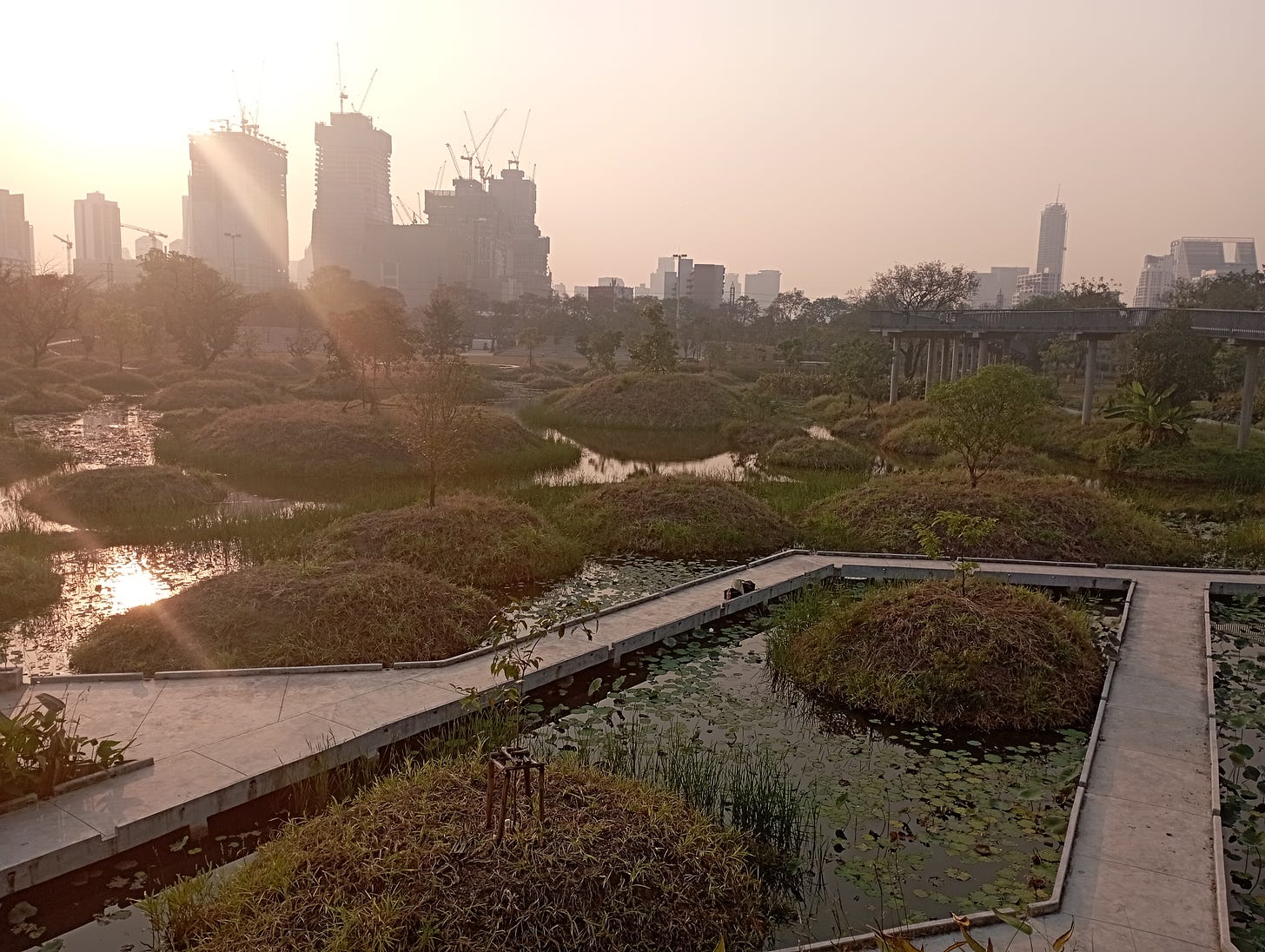

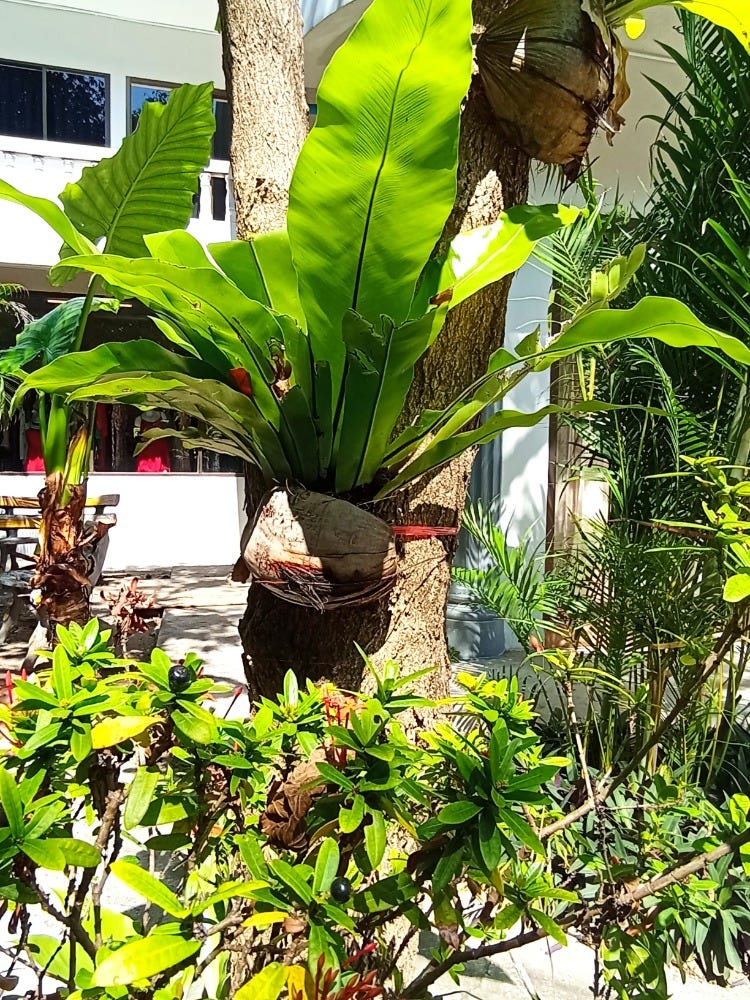
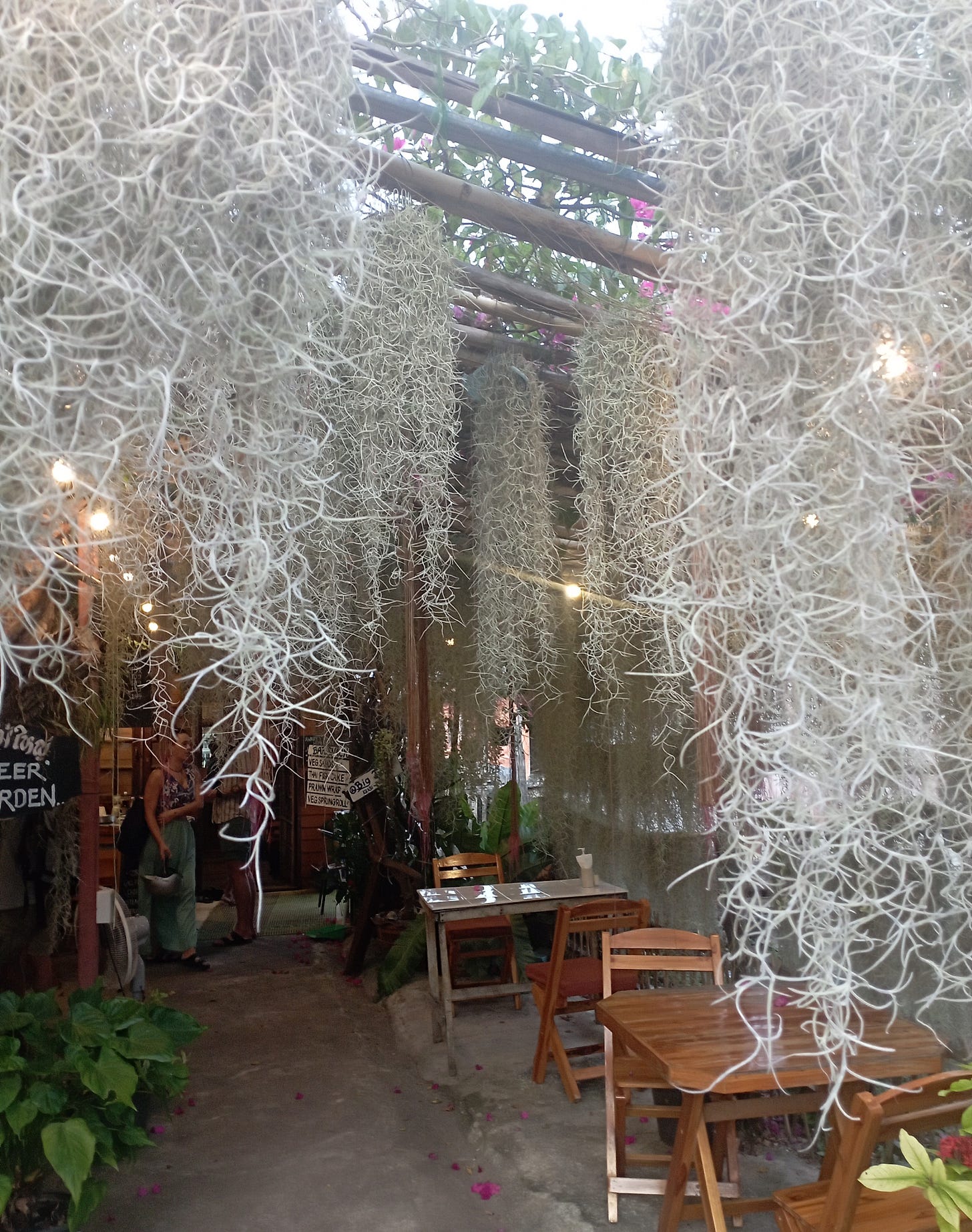
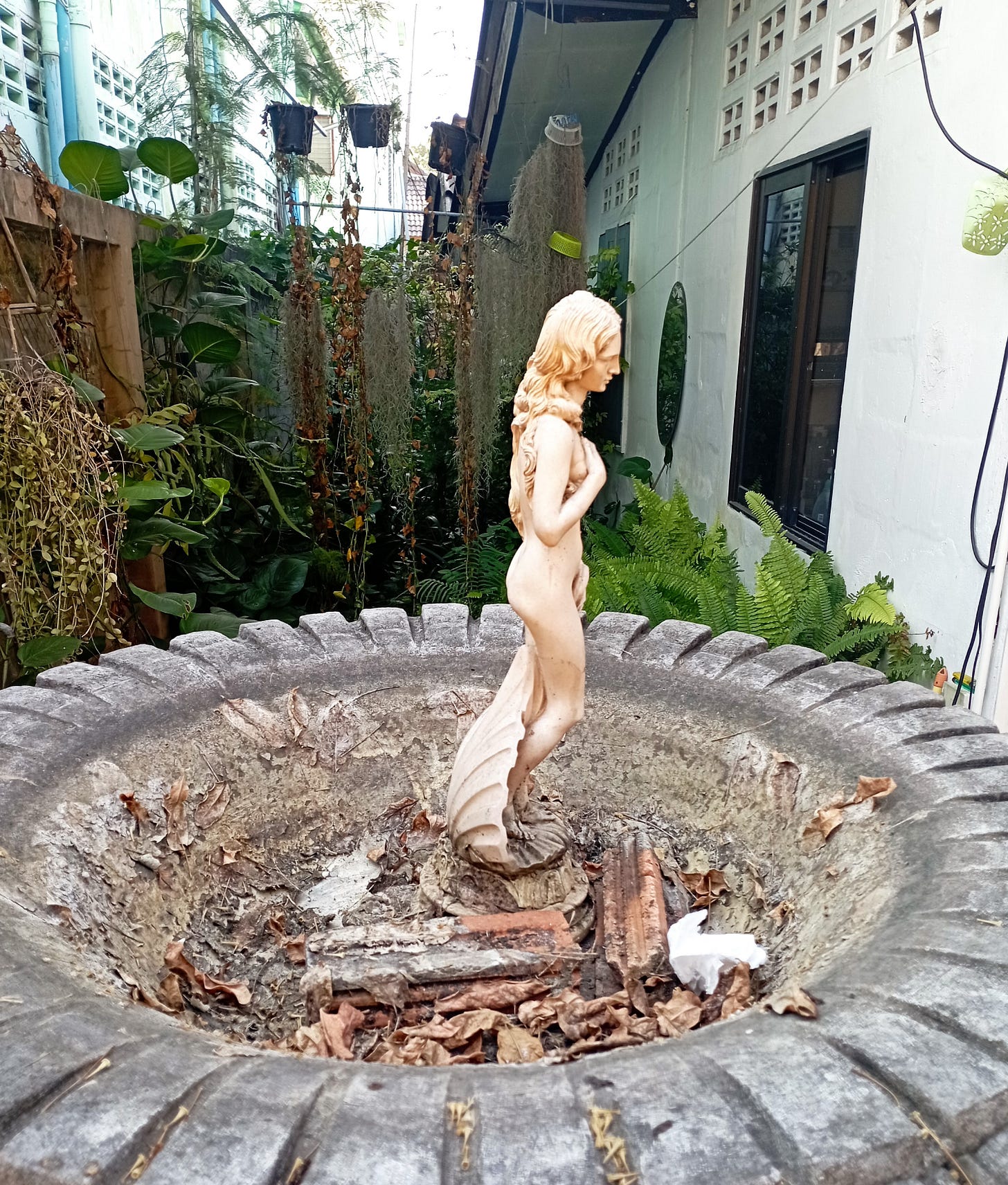
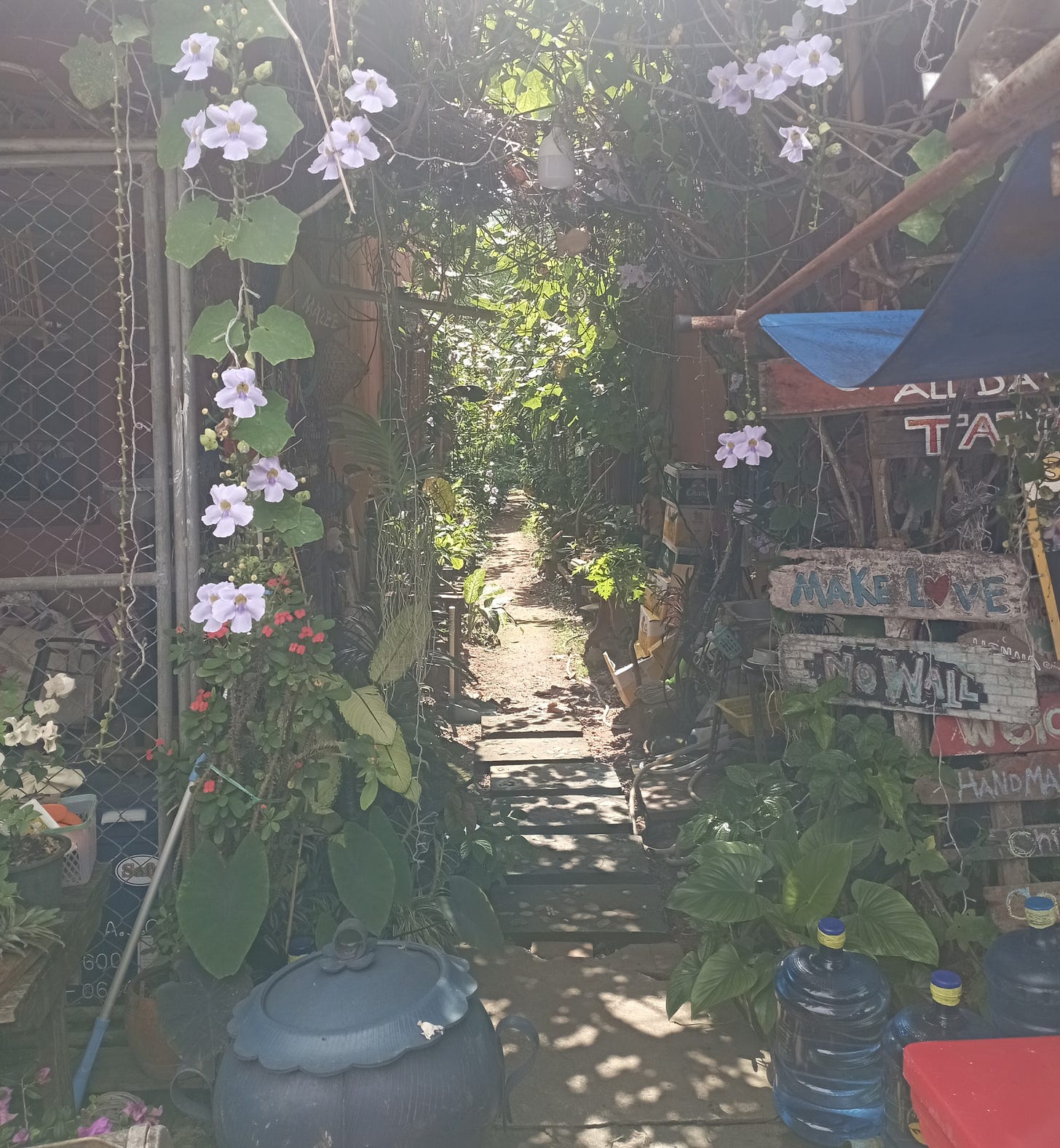
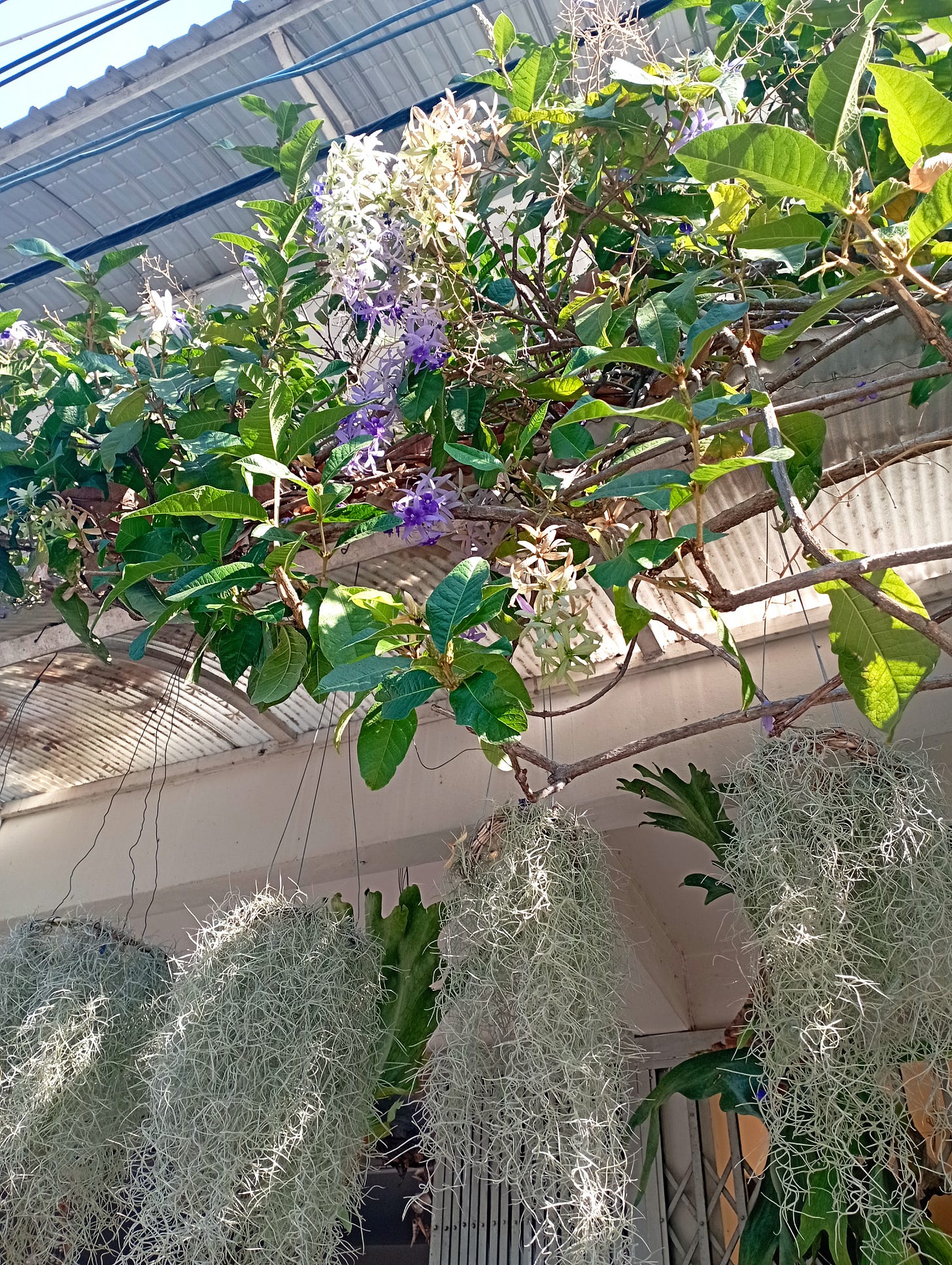
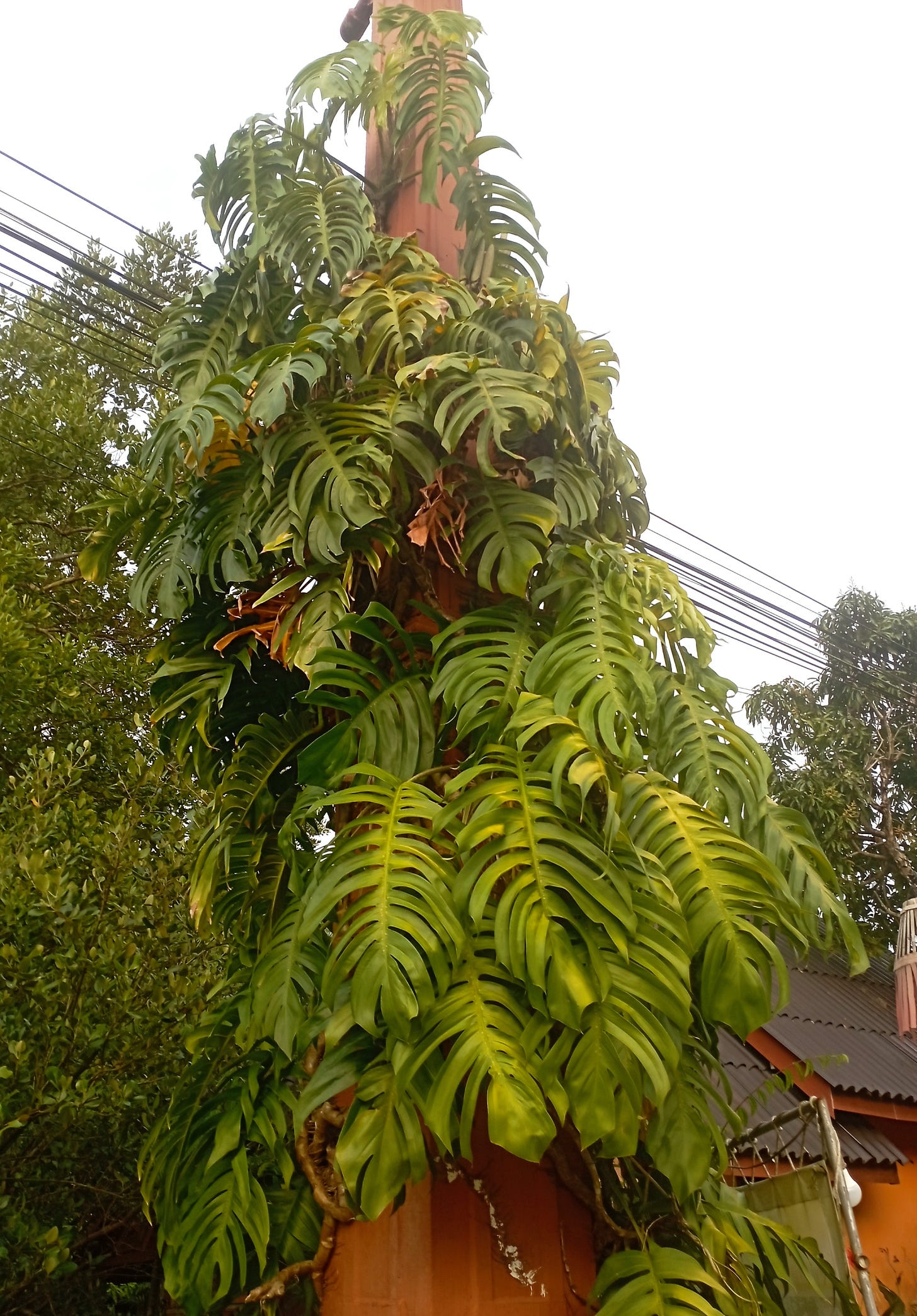
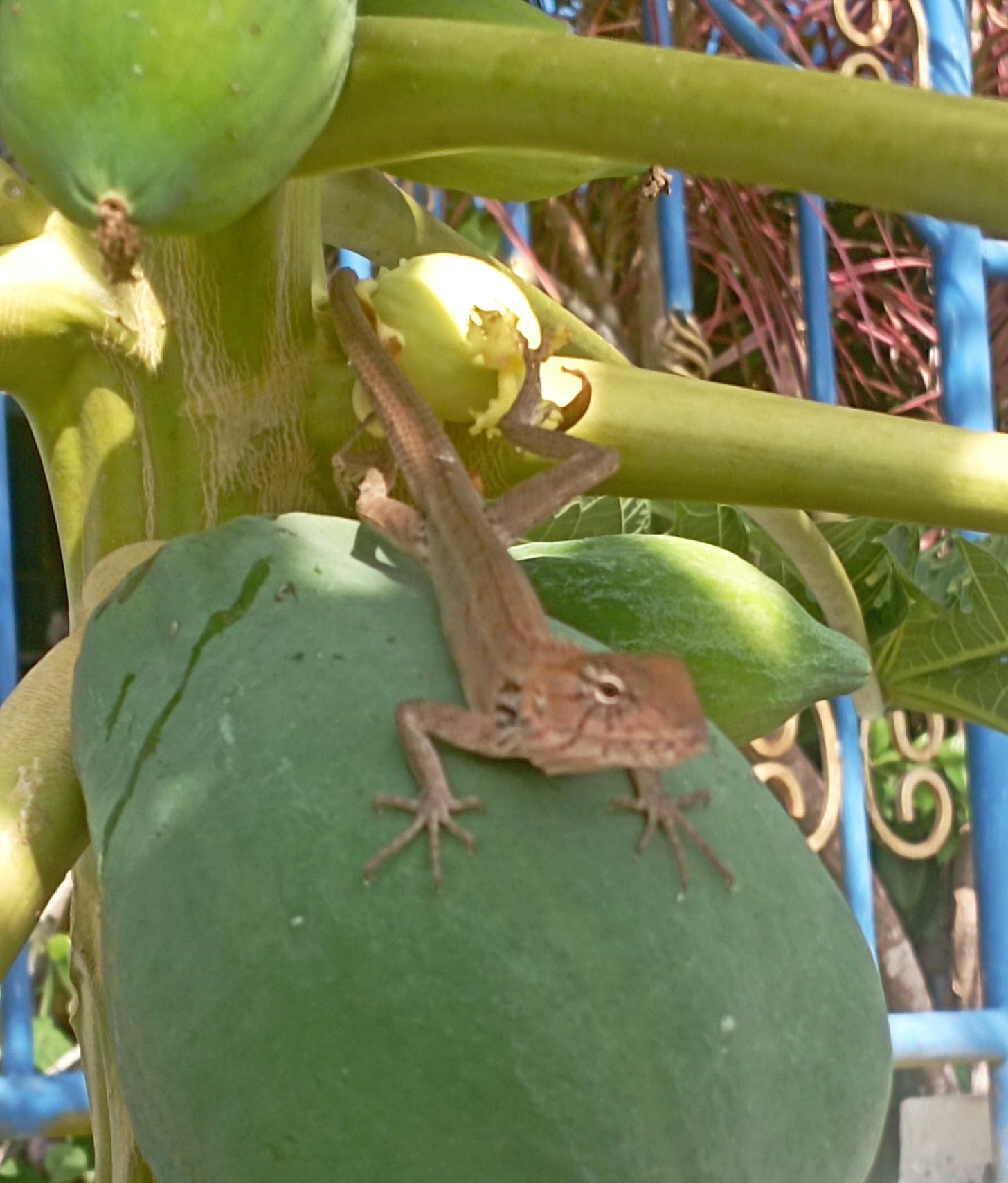

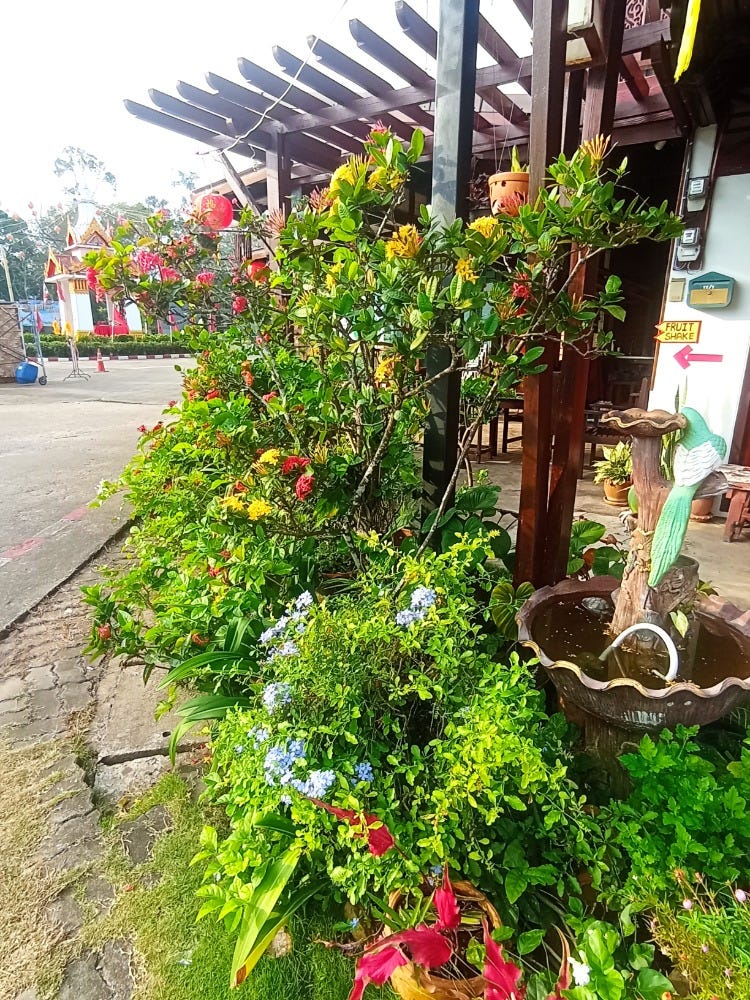
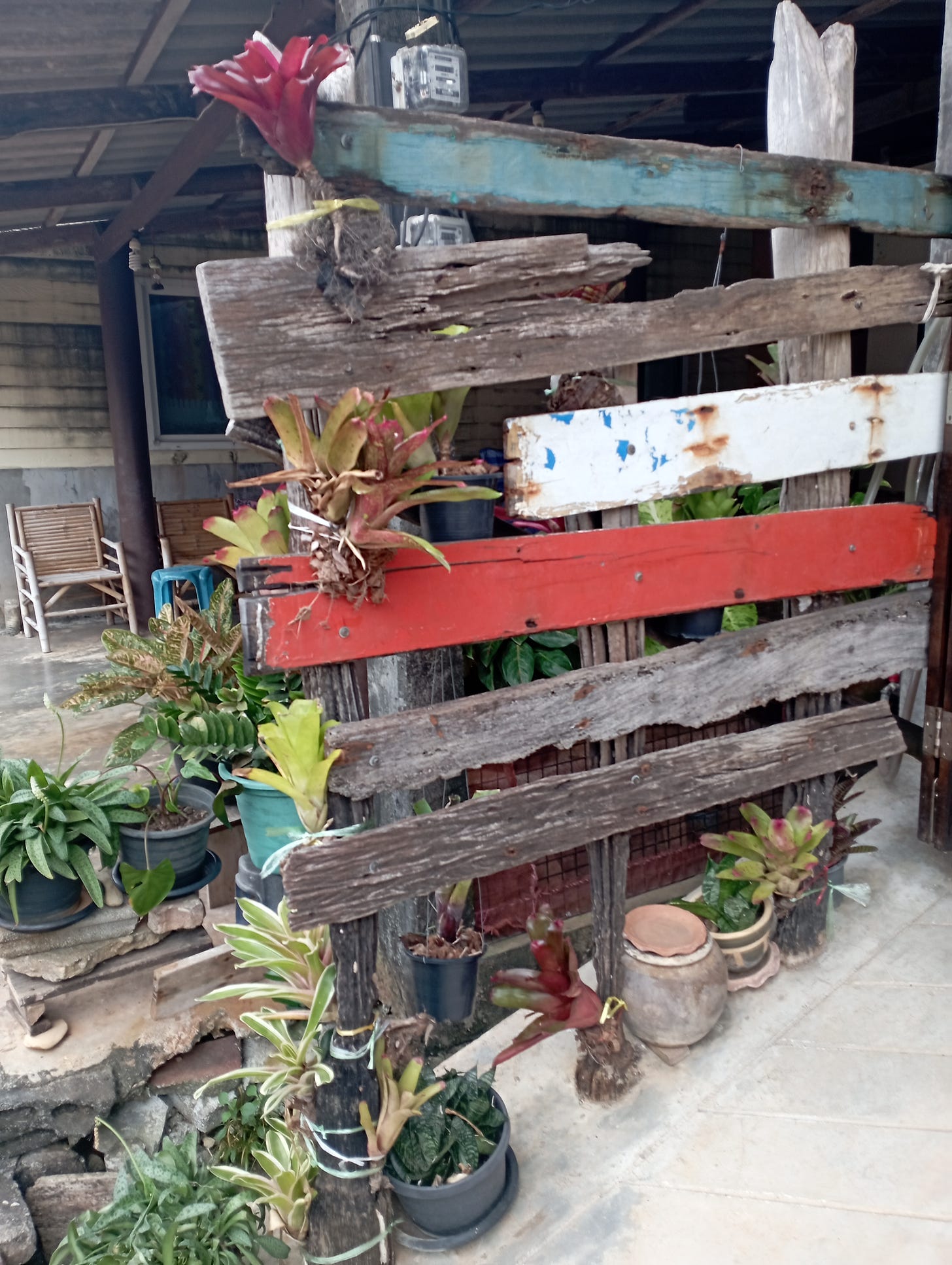
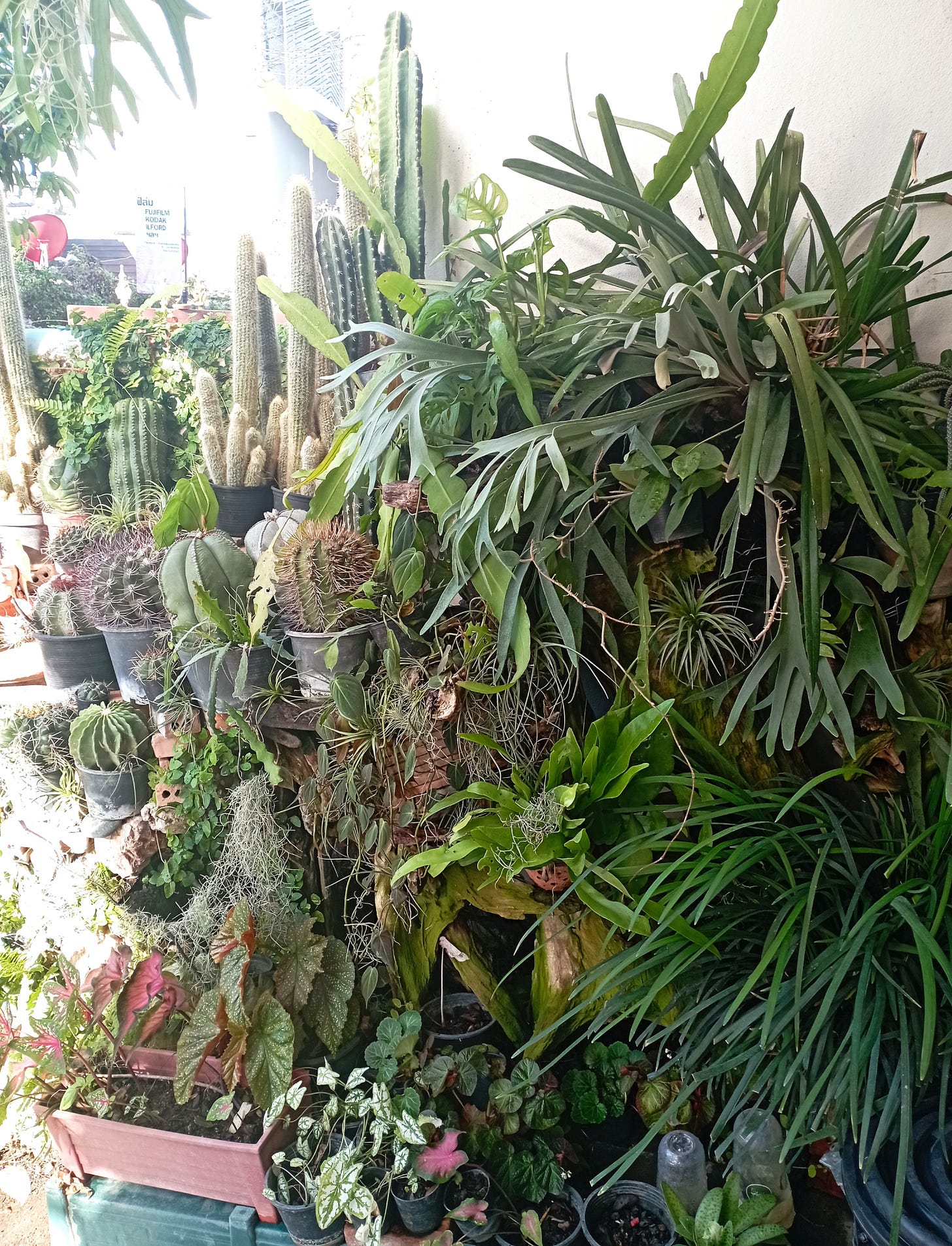
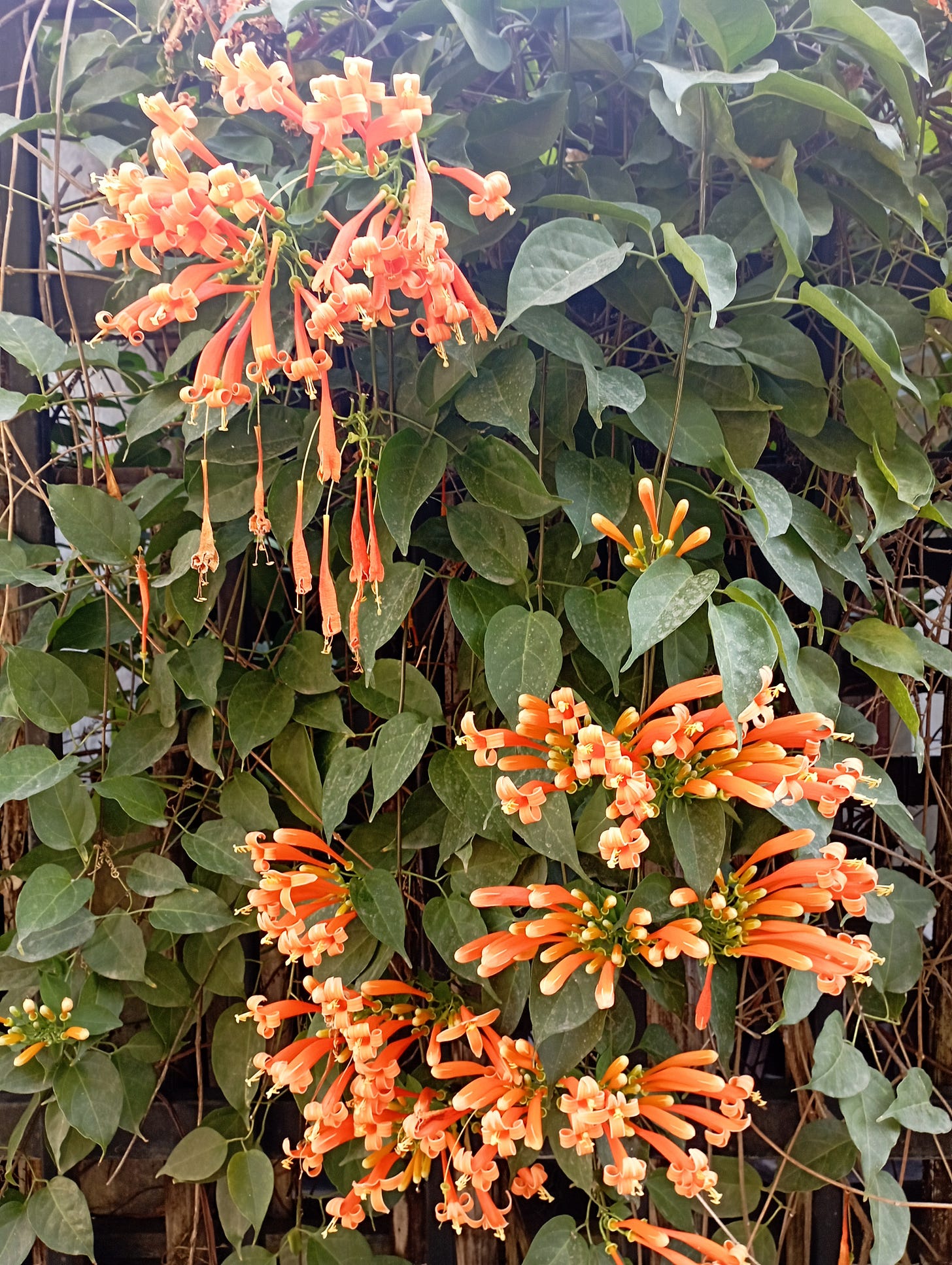

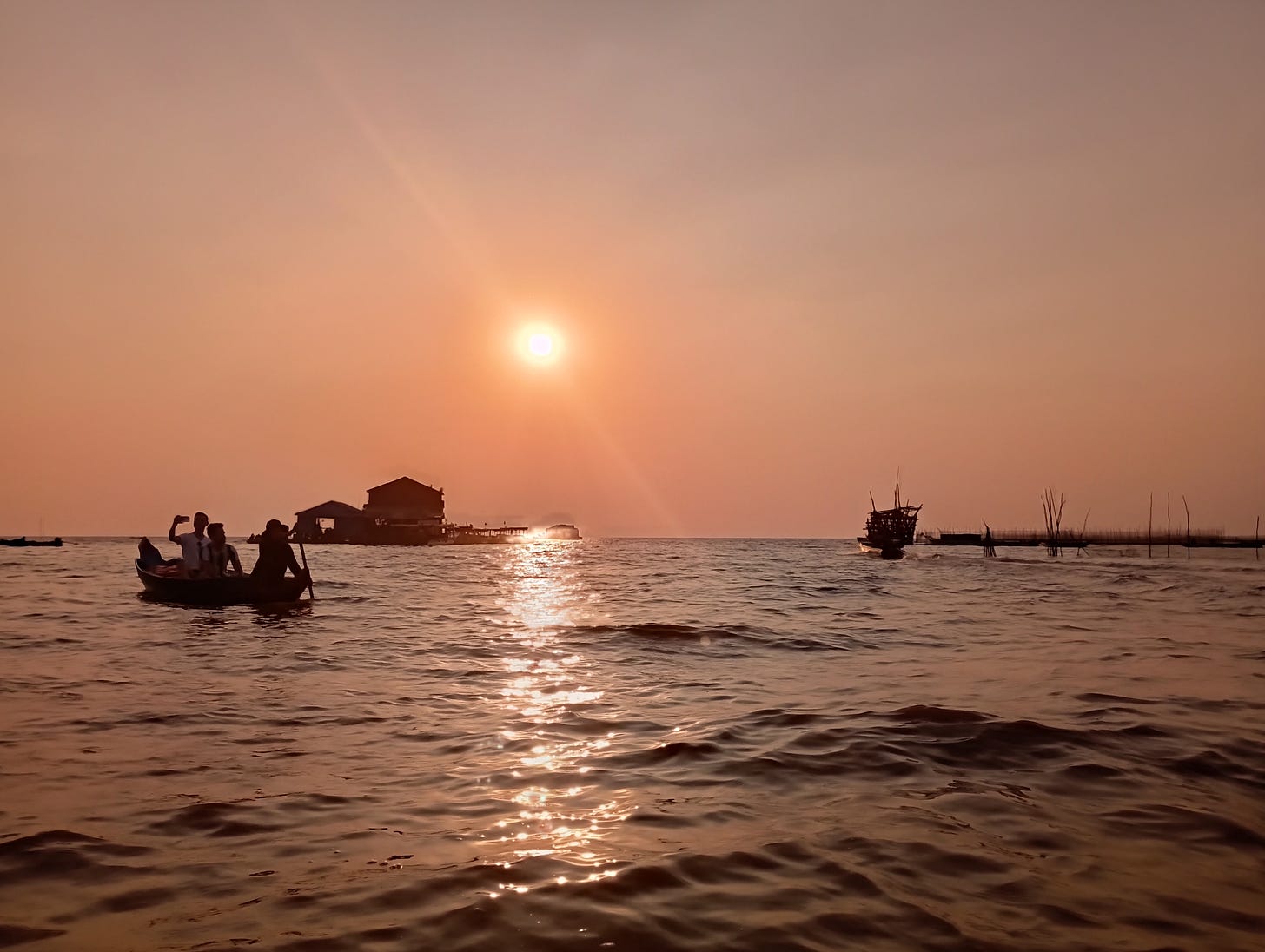
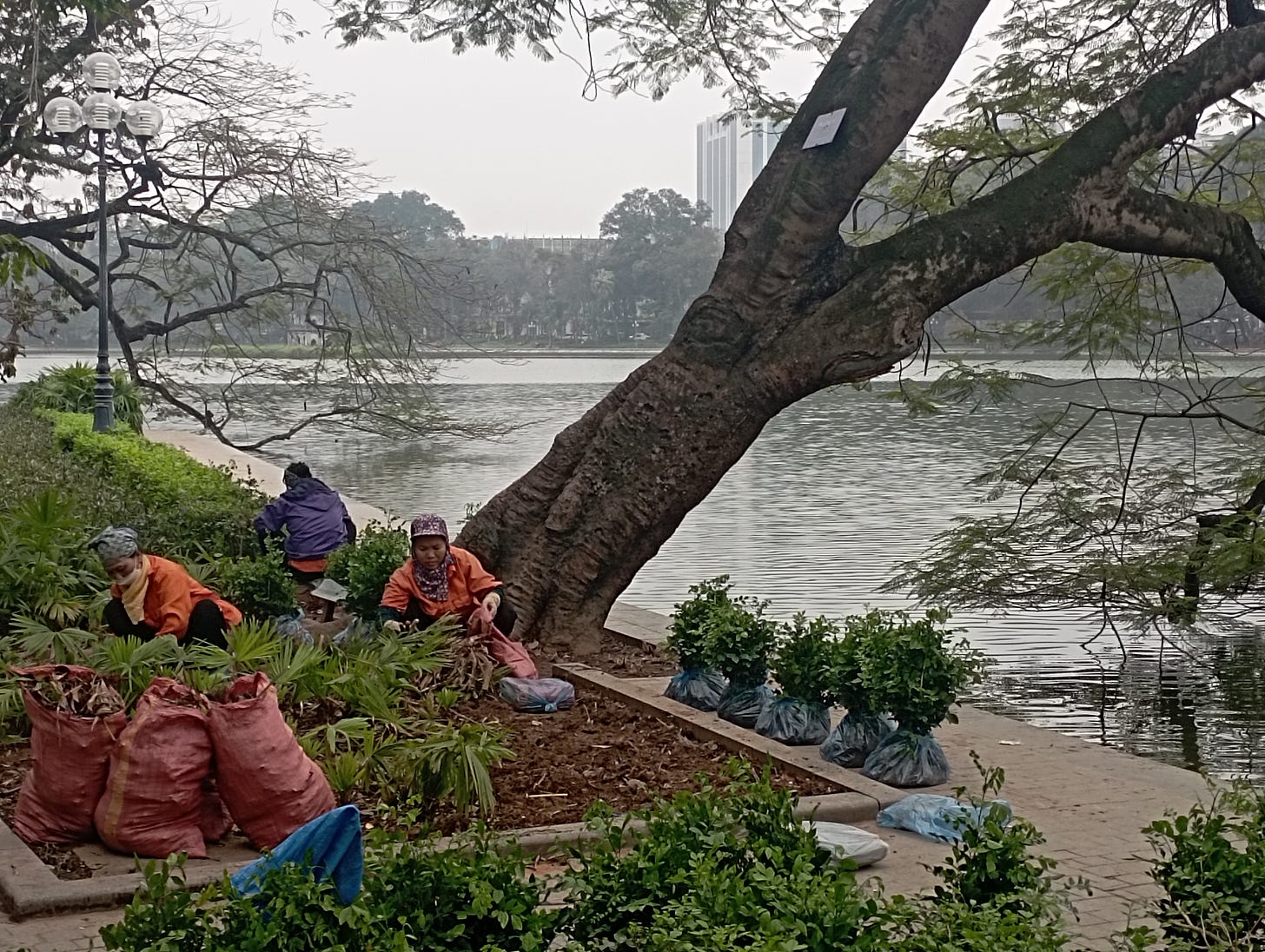
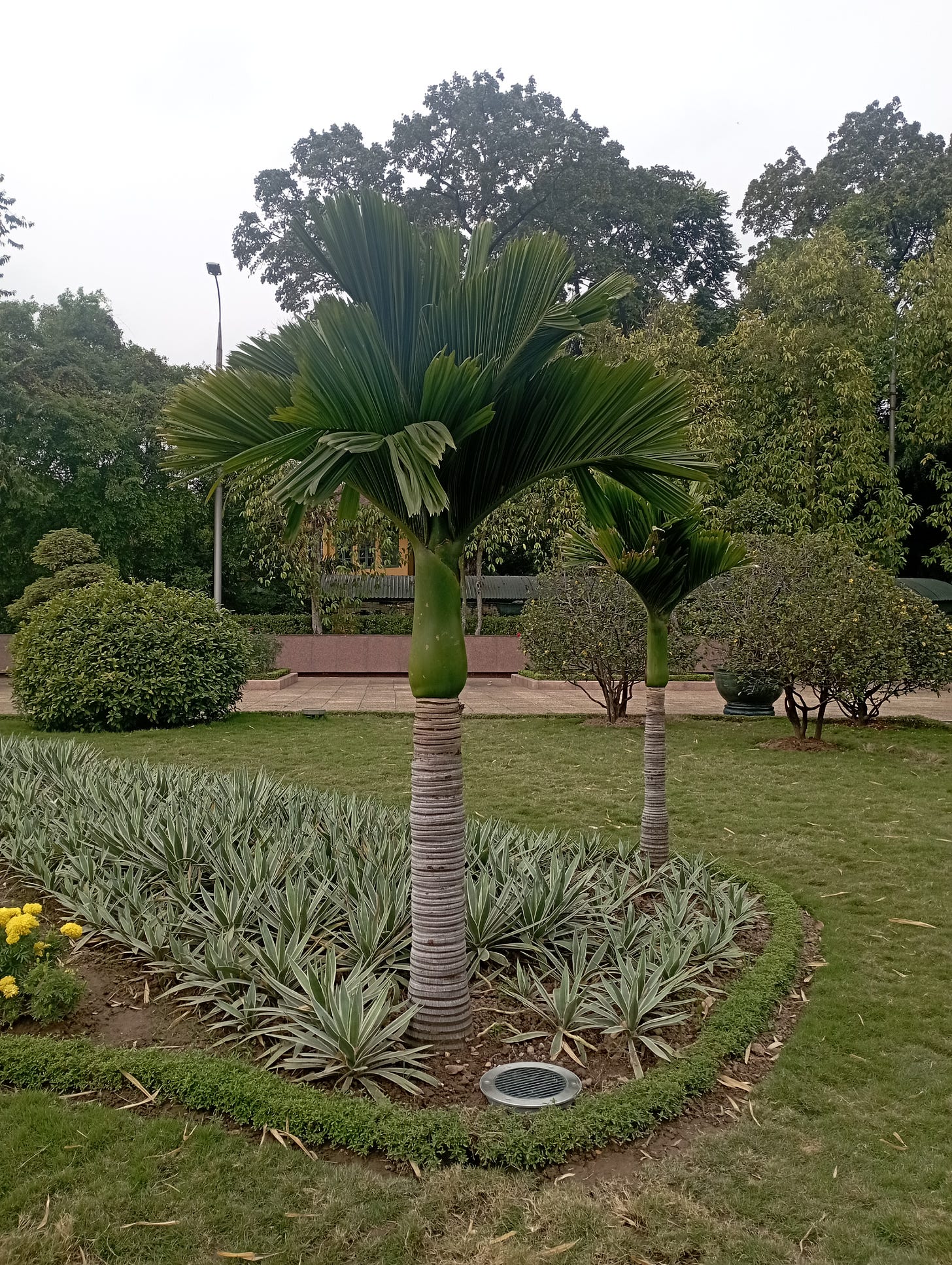
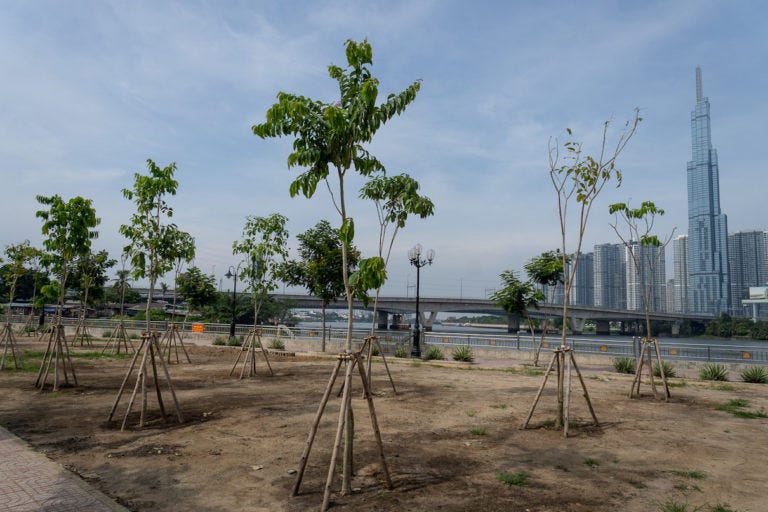
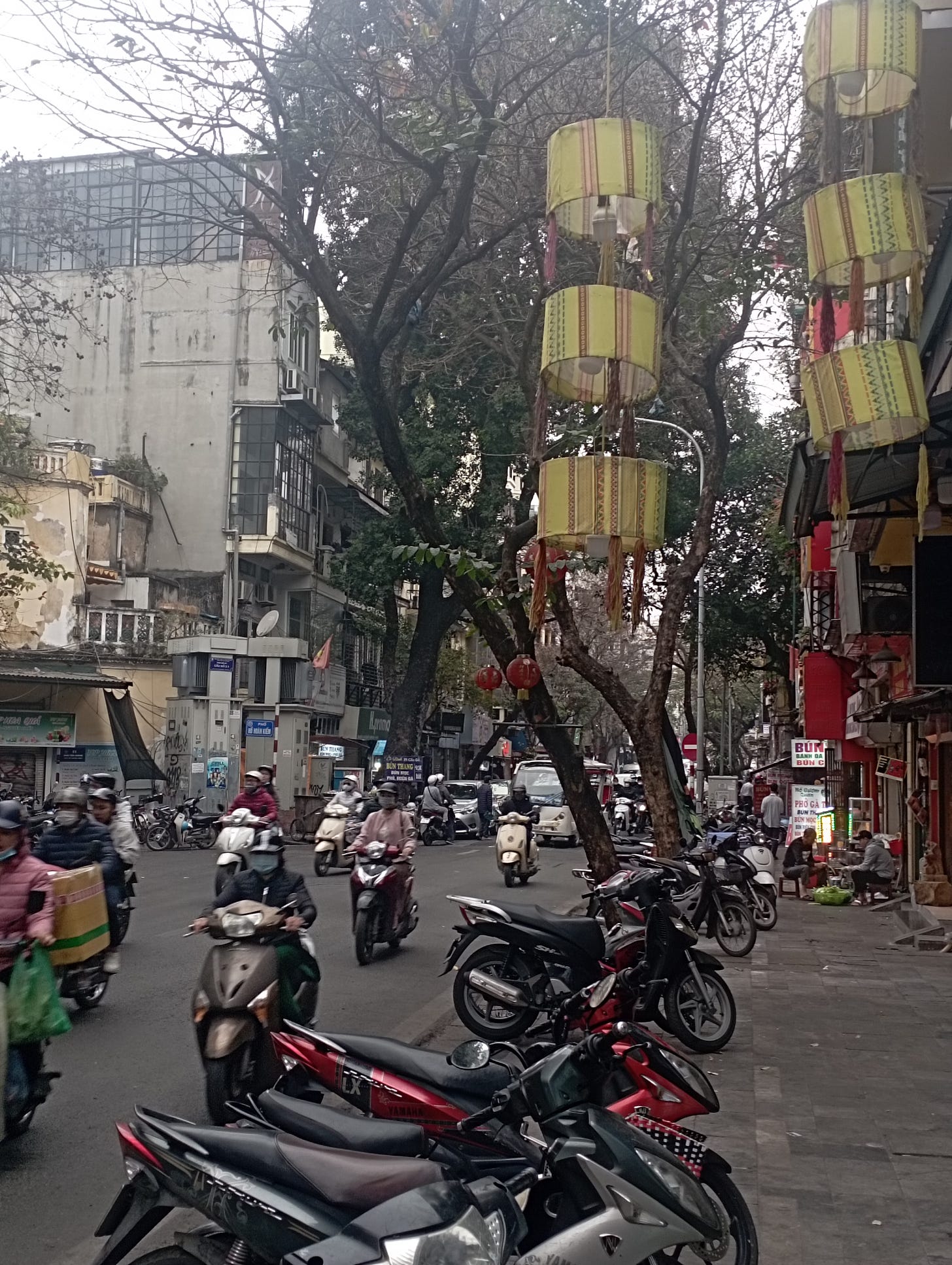
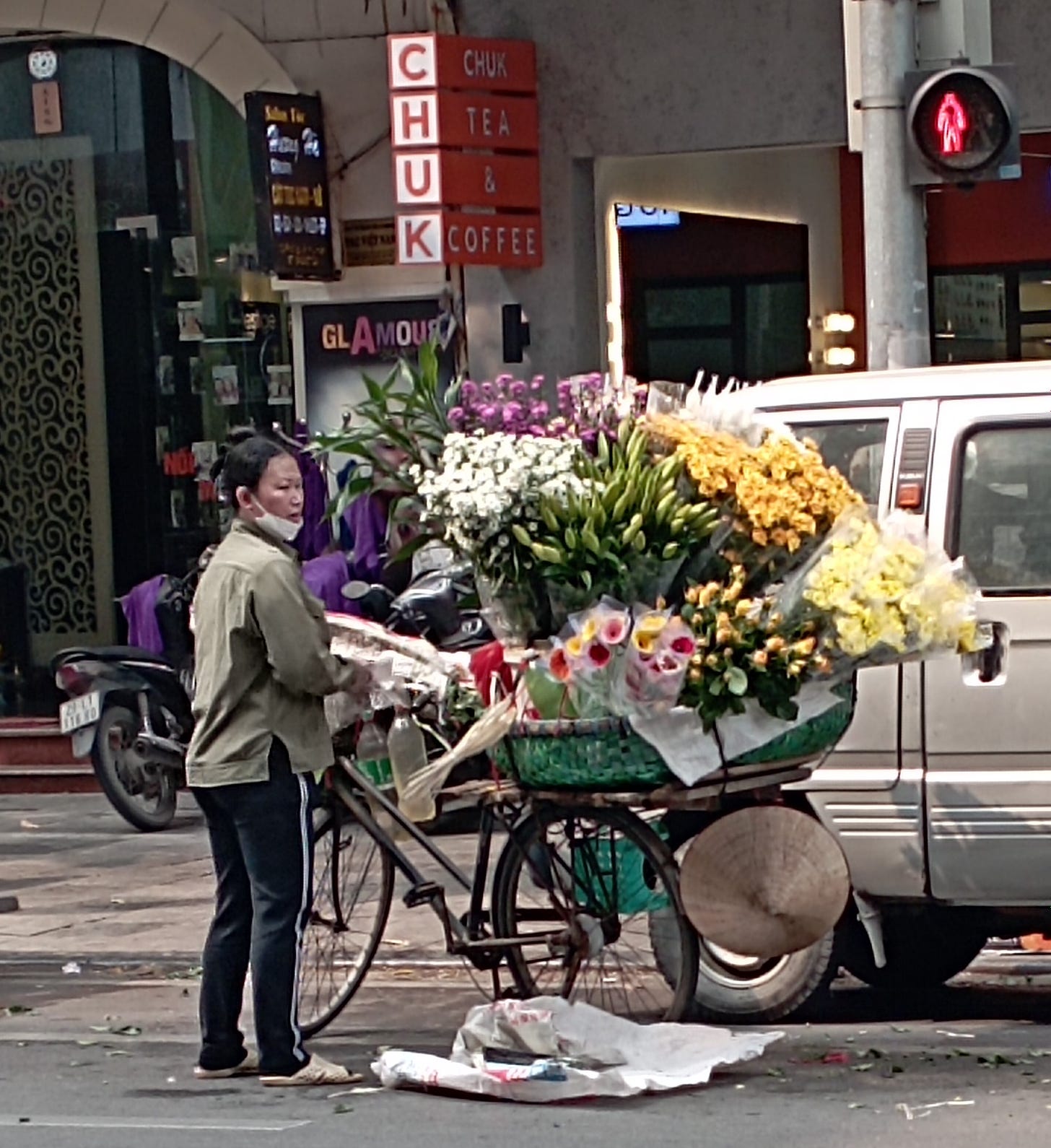
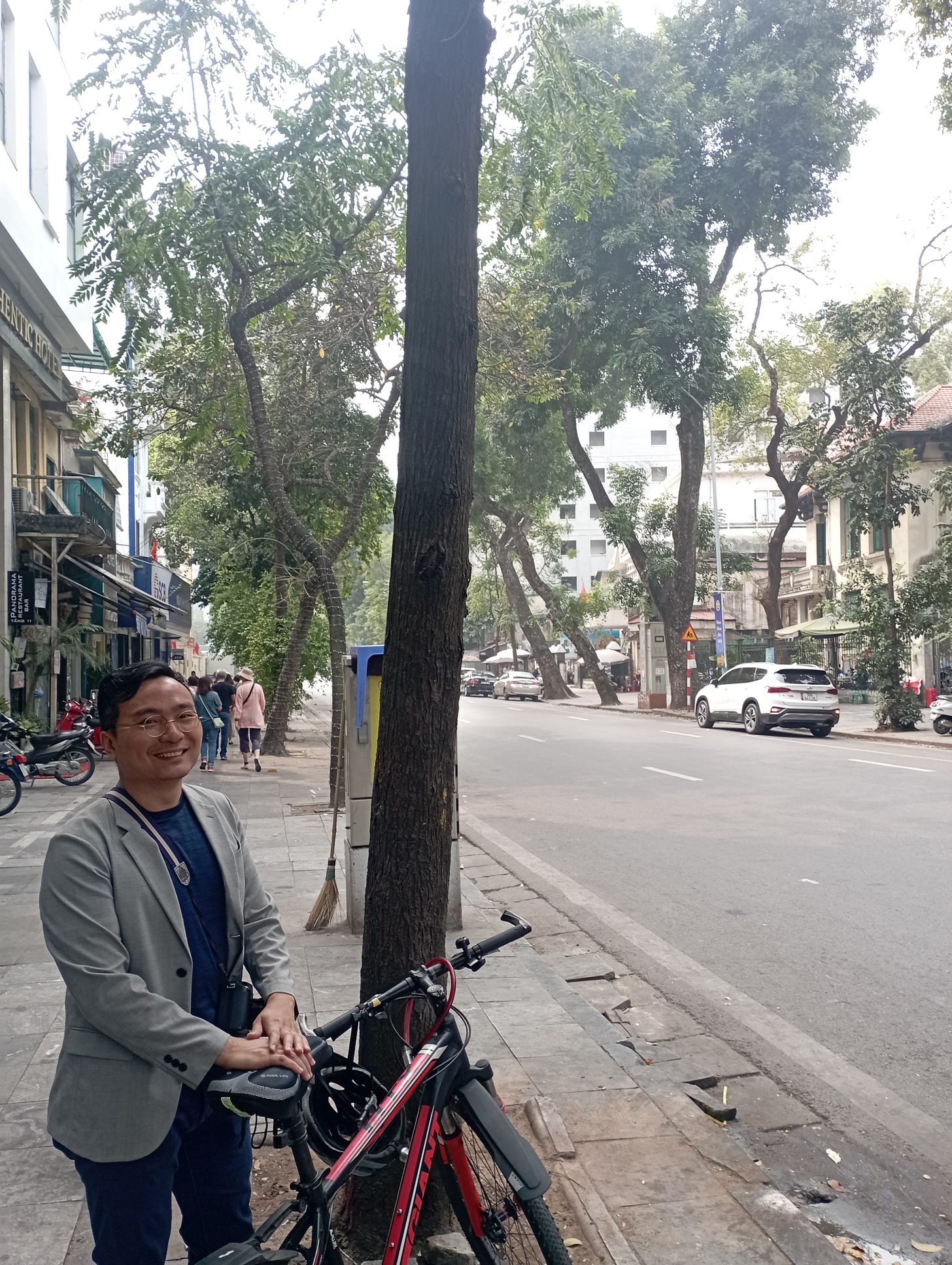
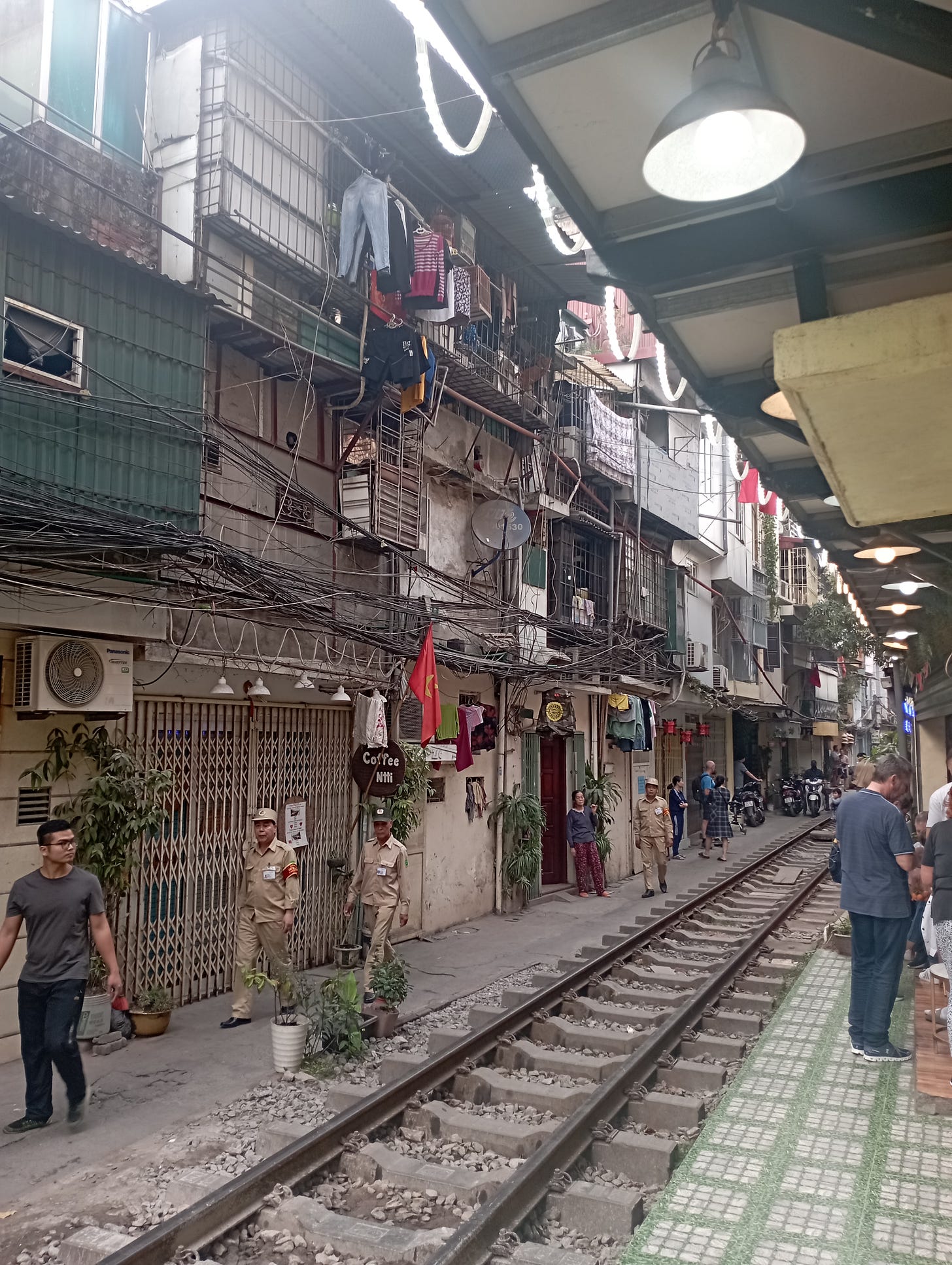
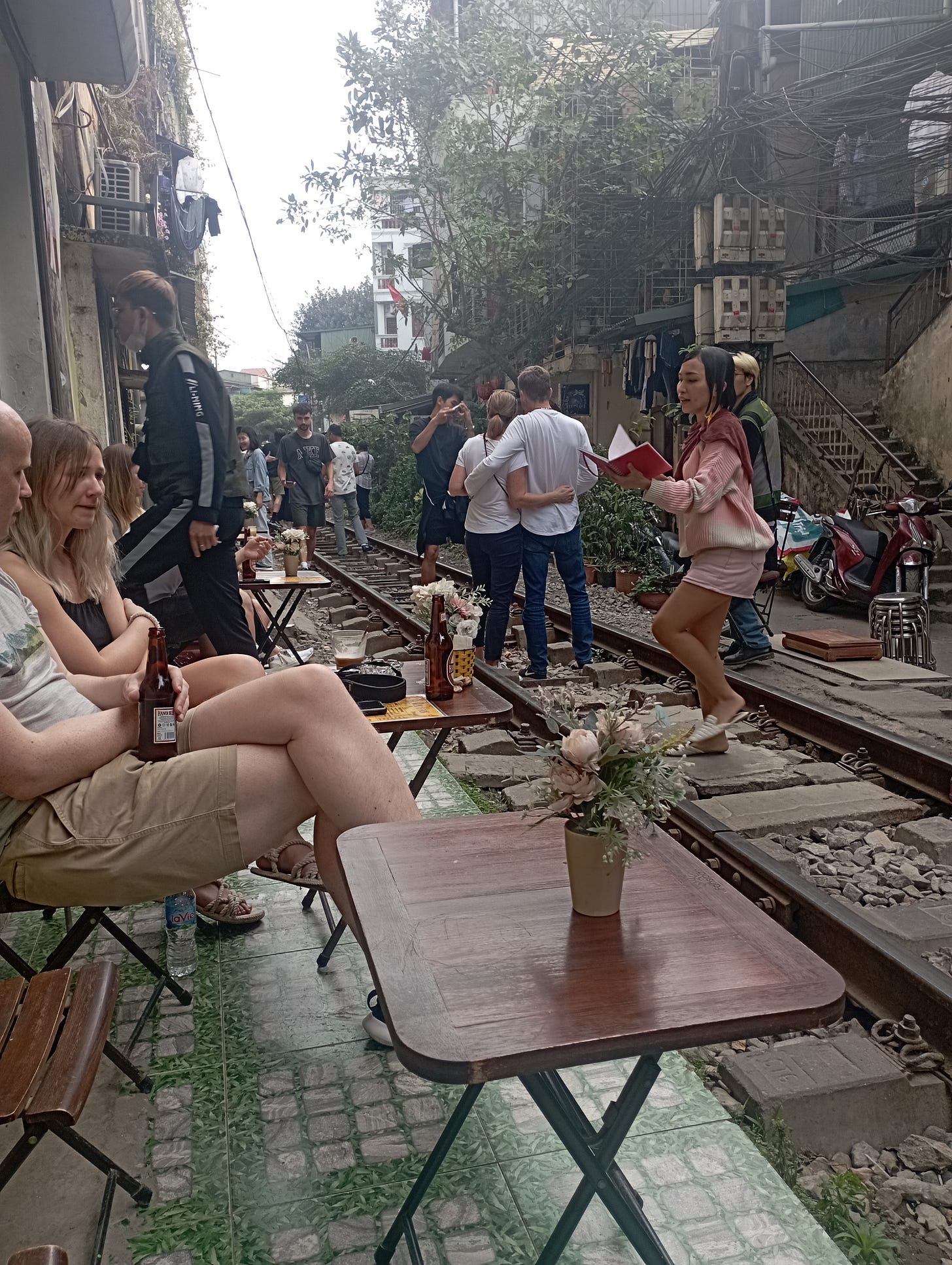
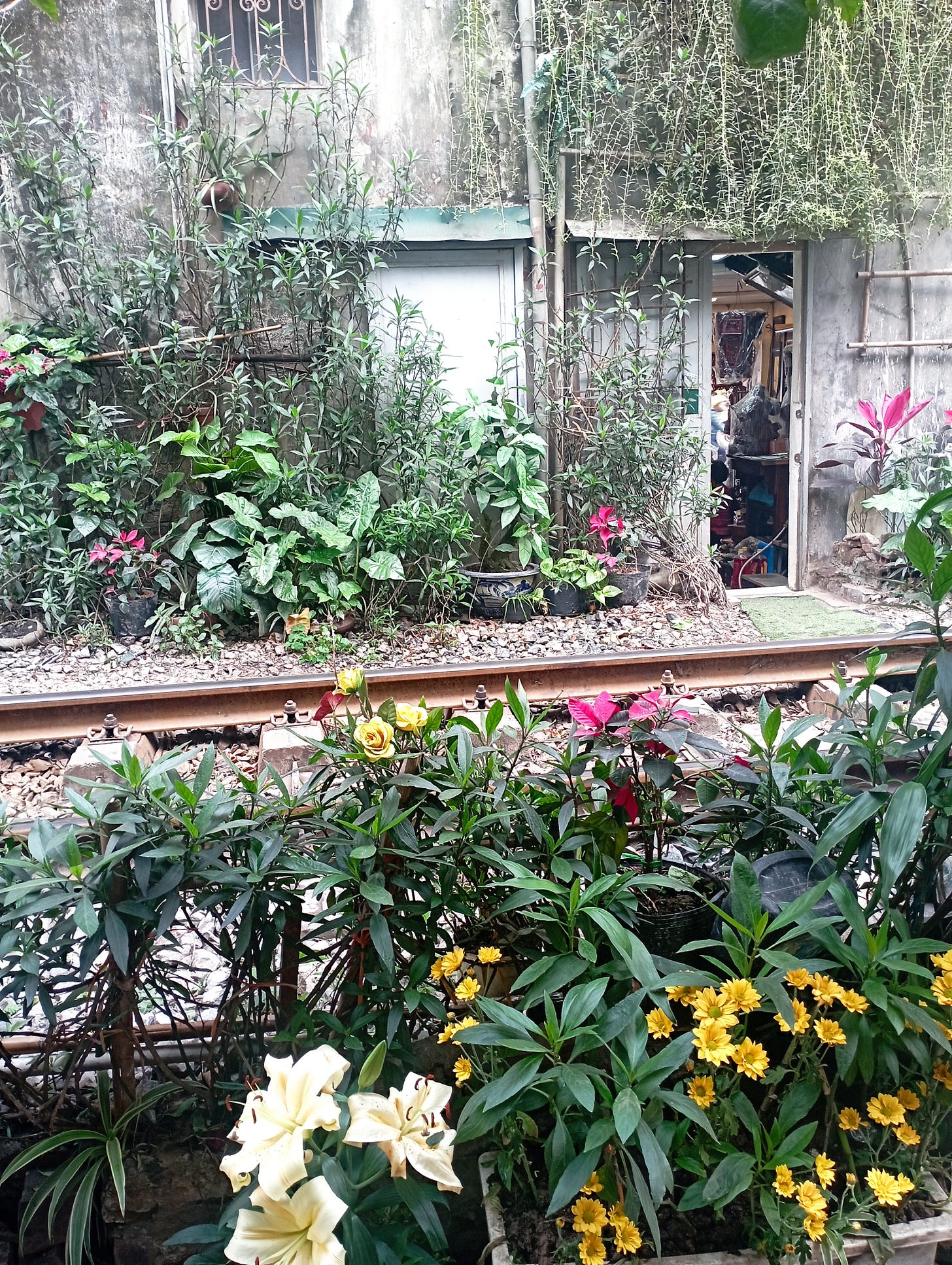
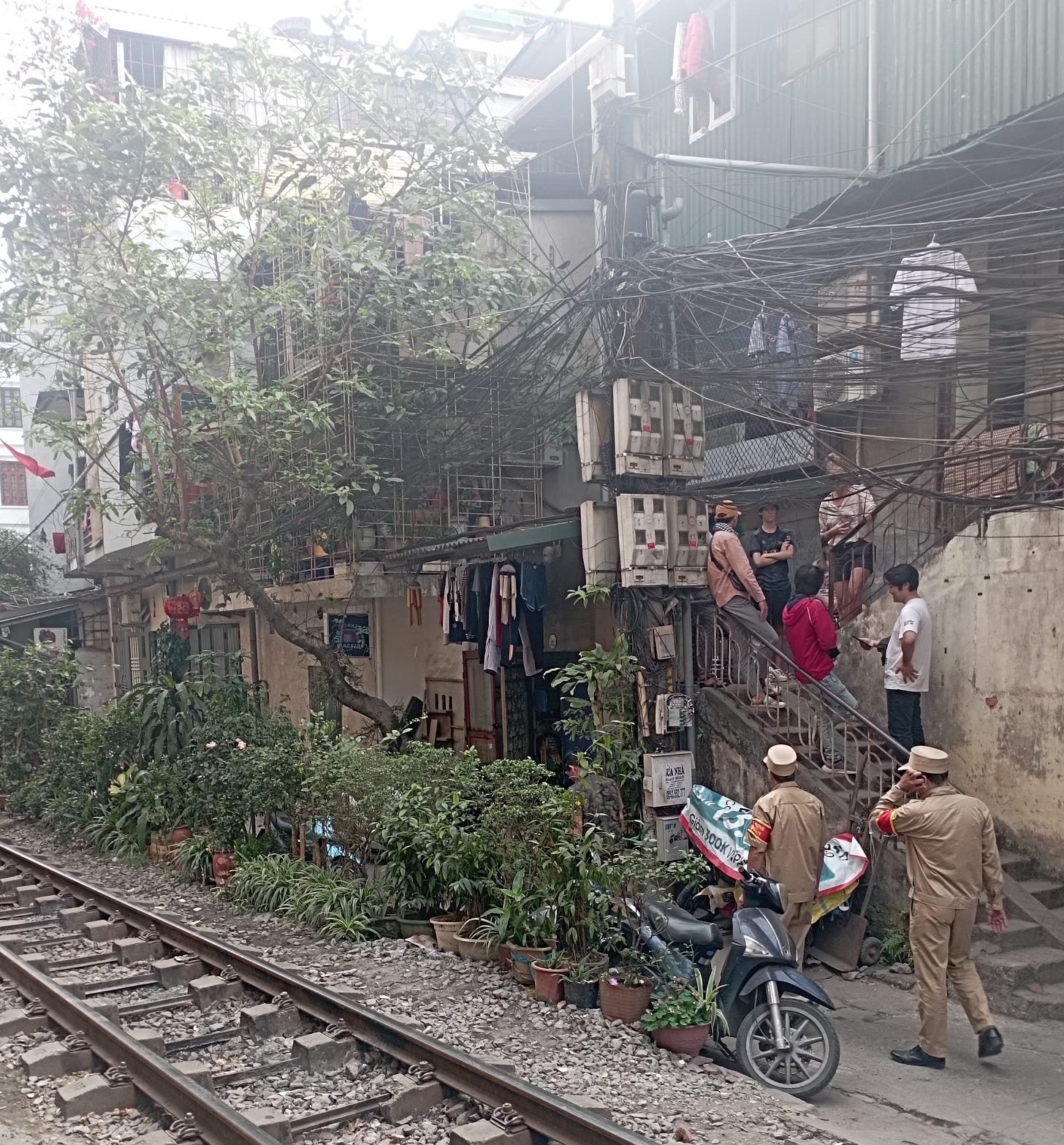

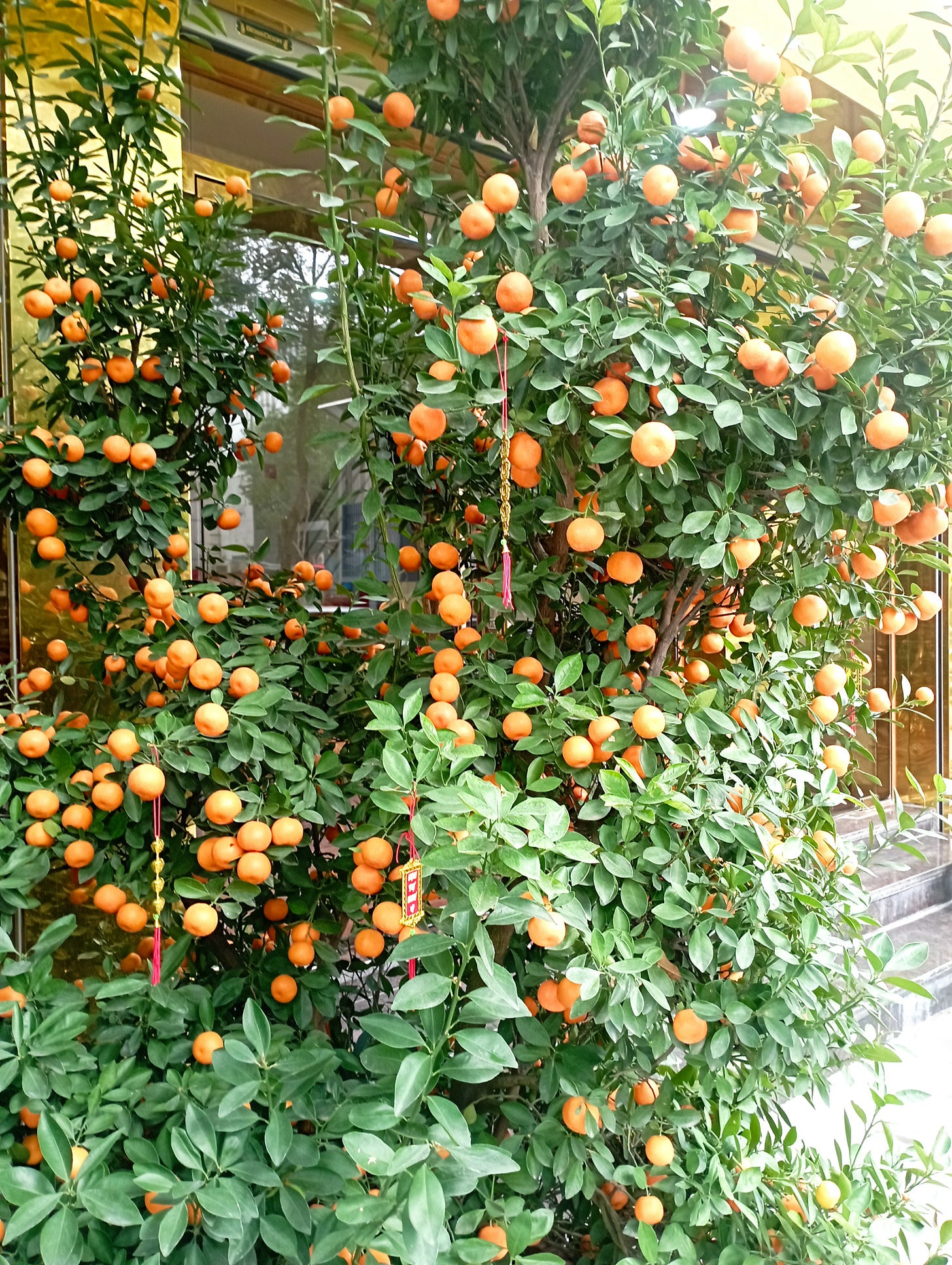
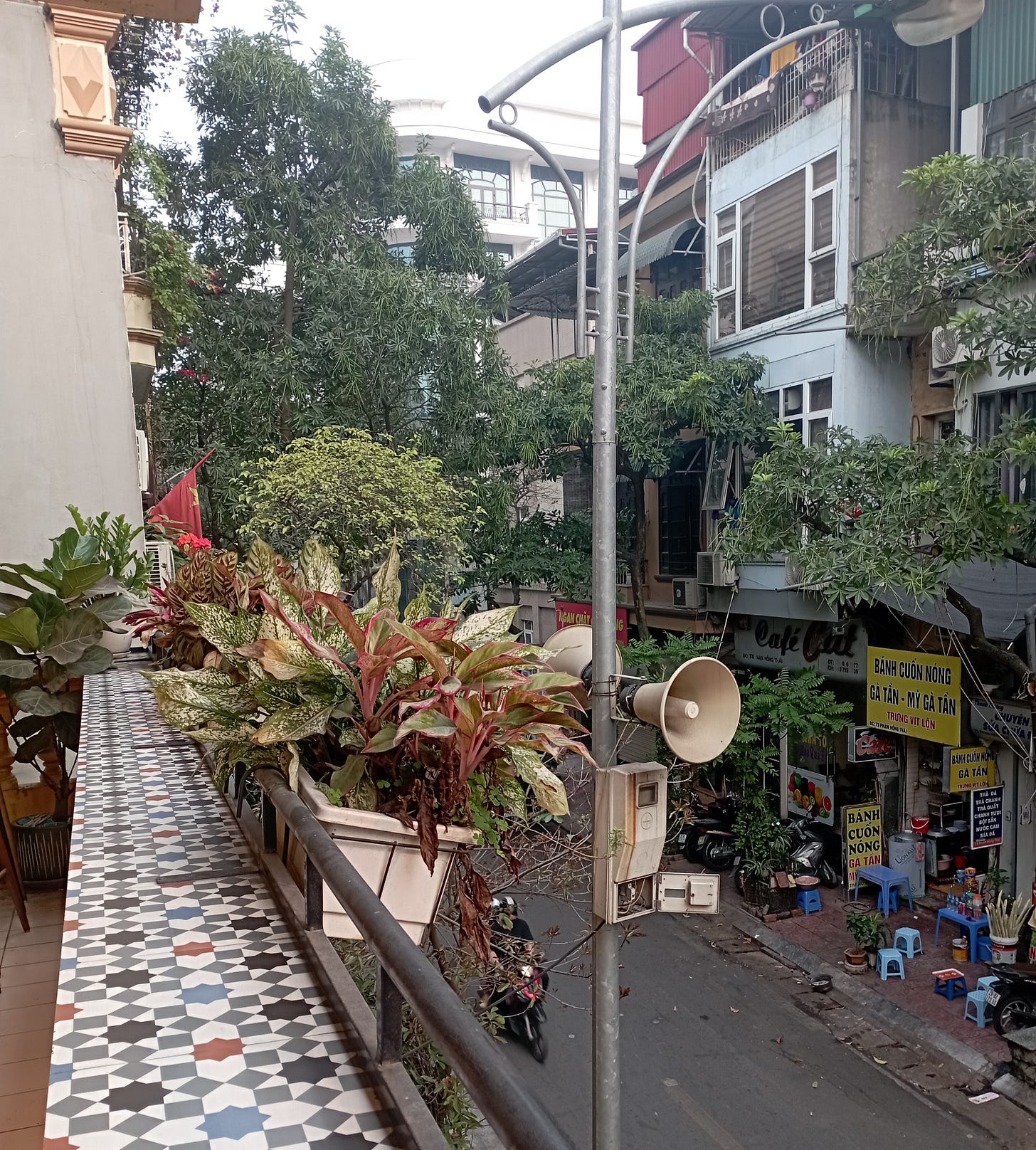
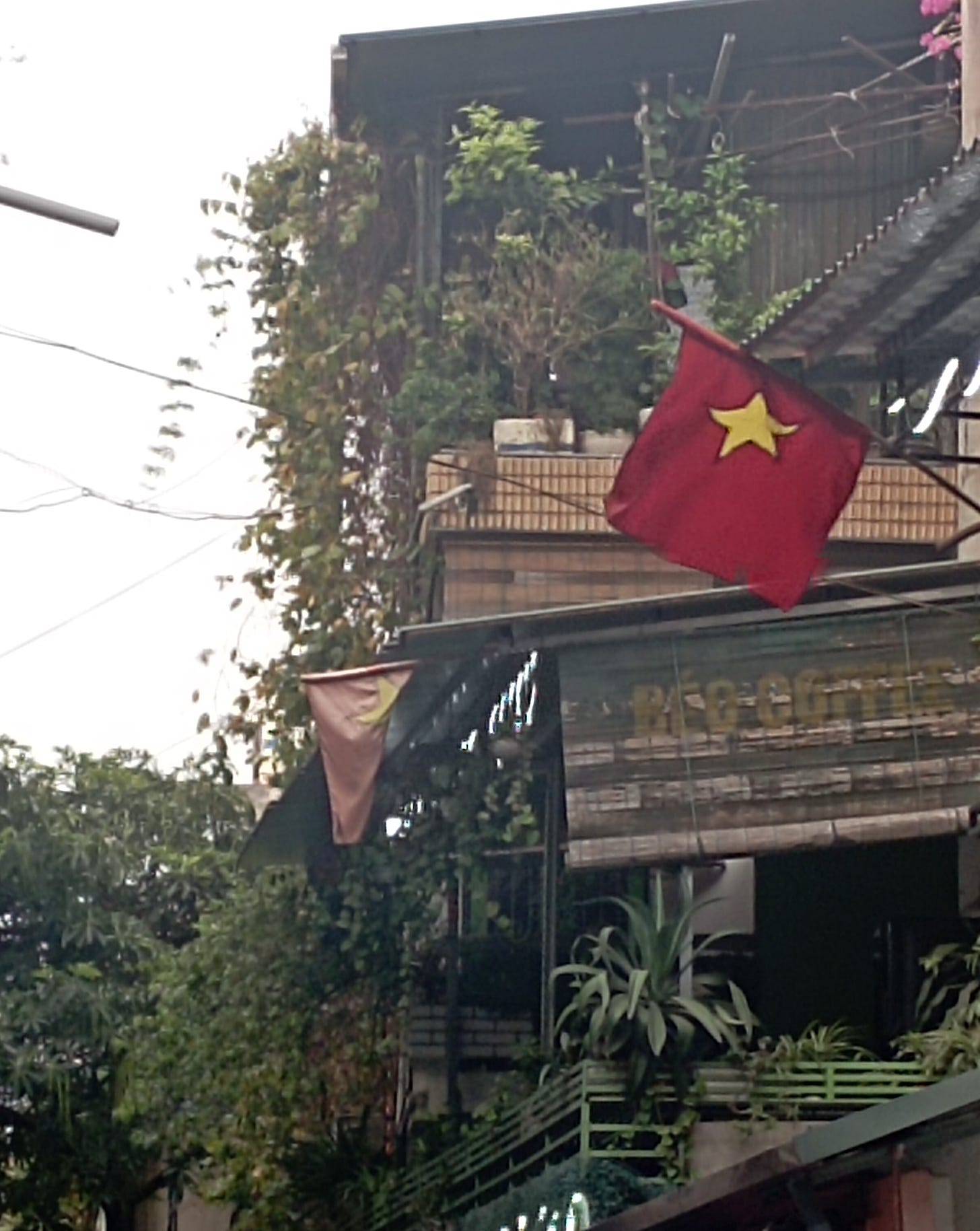
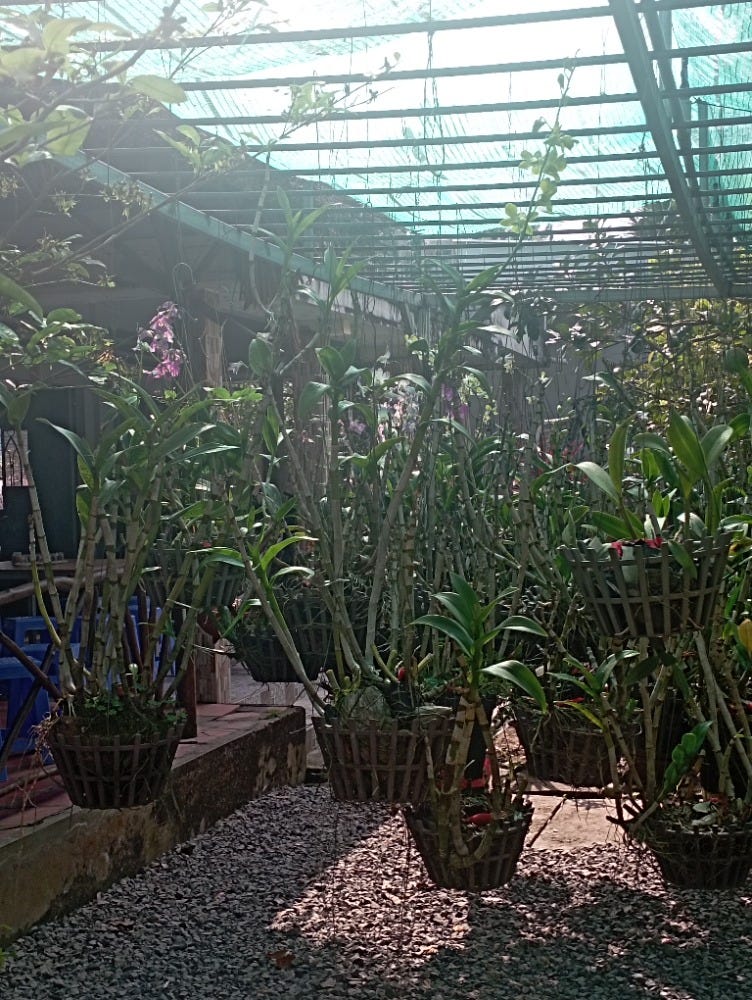
I know!
Great article Laurel. Greening cities is a hot topic of debate and no city is really doing enough.